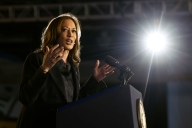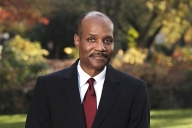You have /5 articles left.
Sign up for a free account or log in.
Conventional wisdom has it that area studies is a result of federal efforts to promote scholarship that might help the U.S. in the Cold War. But a new book argues that this isn’t close to the full story. The book, Field Notes: The Making of Middle East Studies in the United States (Stanford University Press), highlights the role of foundations (with a range of motivations) and focuses on Middle East studies to illustrate the evolution of area studies. The author is Zachary Lockman, professor of Middle Eastern and Islamic studies and of history at New York University. He responded via email to questions about the book.
Q: How did area studies (broadly, not just Middle East studies) evolve in the United States?
A: The conventional story is that area studies, as a new academic field as well as a new set of institutions and funding flows in American higher education, was essentially a product of the Cold War. As the story goes, the United States emerged from the Second World War as a global power increasingly engaged around the world, and thus the government had an urgent need to know more about the rest of the world, especially what would somewhat later come to be called the Third World -- a key battleground of the Cold War. Hence the emergence of area studies, supposedly established to provide the state with expertise about parts of the world that few Americans knew much about.
In contrast, my research in the archives of the Carnegie, Rockefeller and Ford Foundations, the Social Science Research Council, the American Council of Learned Societies, and elsewhere offers a different genealogy of area studies. Already from the late 1920s, the ACLS -- funded mainly by Rockefeller and Carnegie -- worked to have the humanities devote greater attention to the non-Western world, especially in the modern and contemporary periods (as opposed to the humanities’ traditional focus on “classical” periods). In the interwar period there was also a lot of talk about the need for what would much later come to be called interdisciplinarity, to overcome what some argued was the debilitating division of the humanities and social sciences into distinct and mutually uncommunicative disciplines in the late 19th and early 20th centuries.
The interwar period thus witnessed developments that, together with new sites and practices developed during the Second World War to produce war-related knowledge for the government and military, set the stage for the emergence of area studies immediately after the war ended. Moreover, this new field was conceived, promoted, funded and launched not by the federal government (which got into the act only in 1958, with the National Defense Education Act) but by the Carnegie and Rockefeller Foundations, joined in the 1950s by the Ford Foundation; and while the emergence of area studies was certainly inflected early on by Cold War anxieties and concerns, it was also propelled by a vision (promoted mainly by the SSRC) that, through a focus on specific world regions, area studies could promote a new kind of interdisciplinary knowledge that would advance the social sciences in particular. This vision was never realized, of course, nor (I would argue) did the area studies fields yield all that much “policy-relevant” knowledge. Yet even though area studies never developed a coherent theory or method of its own, as its founders had hoped, it nonetheless established itself as a durable component of higher education and played a significant role in promoting the study of non-Western societies, cultures and languages.
Q: As you note, many assume that area studies had roots in the U.S. government’s desire to understand (and control) different regions, and you point to broader sources for the development of the fields. But did the objectives of U.S. foreign policy play a role?
A: During the early years of the Cold War, government officials and their interlocutors at the foundations certainly hoped that the new area studies centers would produce knowledge and trained personnel to serve the making and implementation of policy. I’m not sure how much of that actually happened, however: while some scholars based in area studies (especially political scientists) actively sought to contribute to policy making, most had primarily scholarly and pedagogical interests and priorities. In any event, by the late 1960s and early 1970s many of these fields witnessed the emergence of radical critiques of the role of the United States in the part of the world on which they focused, undermining the notion that area specialists should prioritize serving the state.
Q: What do you see as the key steps in the development of Middle East studies?
A: Middle East studies had roots in a much older American tradition of Arabic and Islamic studies, generally related either to Bible studies or to missionary activity, as well as in the study of the ancient Near East. This contributed to considerable contention over the direction of Middle East studies as it was launched right after the Second World War, first with foundation support and from 1958 with federal funding as well. In many ways the historical trajectory of Middle East studies was similar to that of area studies as a whole: despite sporadic efforts by some, relatively little useful policy-relevant knowledge was actually produced by those in the field, and from the early 1970s growing numbers became increasingly critical of U.S. Middle East policy as well as of the hitherto dominant intellectual paradigms in the field, Orientalism and modernization theory.
Perhaps what most distinguishes Middle East studies from other area studies fields is the fact that, since the 1980s, scholars and teachers in this field have recurrently been subjected to campaigns of harassment and vilification by well-organized and well-funded groups based outside of academia which seek to silence the expression of certain opinions and perspectives, particularly with regard to the Israeli-Palestinian conflict.
Q: Some in political science have never truly embraced area studies. Why do you think that is, and how does this affect Middle East studies?
A: While some social scientists embraced the vision behind area studies early on, others criticized what they saw as the new field’s lack of theoretical and methodological rigor, and instead devoted their energies to elaborating supposedly universal paradigms like modernization theory and behavioralism. But of course by the 1970s those paradigms had foundered, even as it became clear that what gave area studies fields such coherence as they possessed was their common focus on a particular region and their institutional infrastructure.
The transformations of the 1980s and beyond, including the critique of Orientalism, the impact of women’s and gender studies, and the “cultural turn,” opened the way for scholars in Middle East studies to shed what had been a widespread sense of intellectual isolation, backwardness and inferiority, and instead to engage across disciplinary and regional boundaries in productive new ways.
Q: Scholars of the Middle East regularly find themselves criticized as anti-Israel or apologists for radical Islam or any number of things. Did the development of the field leave scholars more vulnerable to such criticisms? Are there lessons from the development of the field that can help today’s scholars of the Middle East?
A: Scholars working on the modern and contemporary Middle East have repeatedly come under attack because certain individuals and organizations, based outside of academia and seeking to further their political agenda, have not been prepared to tolerate (much less seriously engage with) opinions and perspectives which contradict their own and therefore seek to stifle them, whether by branding scholars as anti-Israel (or even anti-Semitic) or -- especially after 9/11 -- as apologists for radical Islamism. This seems to be a cost of doing (scholarly) business for an academic field which focuses on a region of the world in which the United States has been deeply, often disastrously, engaged for some seven decades, and within which some scholars address a specific conflict about which some Americans have very strong feelings.
The complex, nuanced, historically grounded and critical analyses that scholars are trained to produce, even on controversial topics, are thus often met by invective, accusations of bias and threats to defund the field. As a result Middle East studies has become a key battleground in the struggle to protect academic freedom in American higher education.








